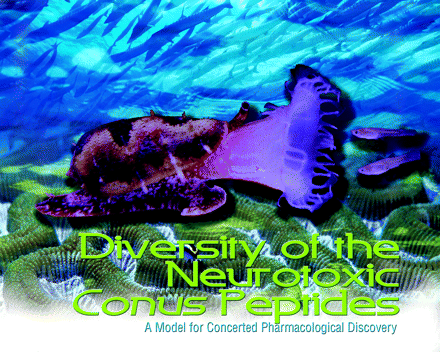Diversity of the Neurotoxic Conus Peptides
A Model for Concerted Pharmacological Discovery
Abstract
Predatory cone snails (genus Conus) produce a rich array of venoms that collectively contain an estimated 100,000 small, disulfide-rich peptides (i.e., conotoxins, or conopeptides). Over the last few decades, the conopeptides have revealed a remarkable diversity of pharmacological function and utility. An evolutionary rationale for the existence of such a large and pharmacologically diverse set of gene products can be premised on the complexity of intra- and interspecies interactions that define the ecology of Conus snails. Insights into these evolutionary trends, moreover, have been exploited with great neuropharmacological success, so that research into the Conus snails effectively recapitulates a new concerted discovery approach, which we discuss here, for developing unique ligands for both laboratory and therapeutic applications. The Conus peptides thus serve as a model system for reaping the pharmacological potential of biodiverse animal lineages.

- © American Society for Pharmacology and Experimental Theraputics 2007



